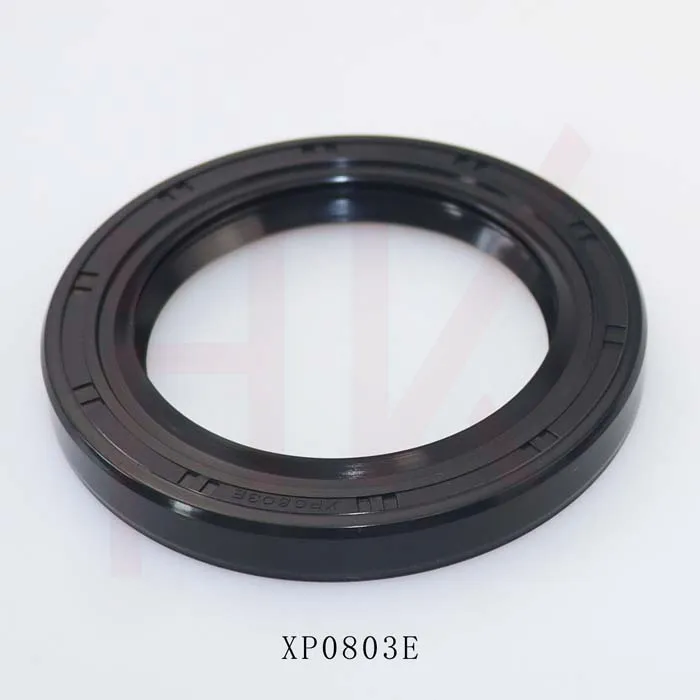Nov . 25, 2024 10:19 Back to list
Rear Wheel Hub Seal Maintenance and Replacement Tips for Optimal Performance
Understanding Rear Wheel Hub Seals Importance and Maintenance
Rear wheel hub seals play a crucial role in the overall health and functionality of a vehicle's drivetrain system. These seals are designed to prevent the ingress of dust, dirt, and moisture, while simultaneously keeping essential lubricants contained within the wheel hub assembly. This article explores the significance of rear wheel hub seals, common issues that can arise without proper maintenance, and tips for ensuring their longevity.
Function of Rear Wheel Hub Seals
The rear wheel hub seal seals off the space where the wheel bearings are located, creating a barrier against external contaminants. By protecting the lubricating grease from contamination, these seals help maintain optimal performance and extend the life of wheel bearings. An effective rear wheel hub seal ensures smooth rotation of the wheels, providing better handling, stability, and overall vehicle safety.
Signs of a Failing Rear Wheel Hub Seal
As with any vehicle component, rear wheel hub seals can wear out over time. There are several warning signs to watch out for that might indicate a failing seal
1. Leaking Grease One of the most noticeable symptoms of a failing rear wheel hub seal is grease leakage. If you observe grease accumulating around the wheel hub area, it likely means that the seal has worn out and is no longer providing a proper barrier.
2. Unusual Noises Worn bearings, resulting from dirt or moisture entering the hub due to a compromised seal, can lead to grinding or humming noises while driving. If you hear these sounds, it’s a sign that immediate attention is needed.
rear wheel hub seal

3. Wheel Play Excessive play or wobbling in the wheel can also indicate bearing issues, often a direct consequence of a failing seal. This can compromise the safety of the vehicle and necessitates an urgent inspection.
4. Reduced Handling Performance A vehicle with compromised wheel hubs may exhibit poor handling characteristics. If you notice diminished stability, it could be a sign of hub seal failure affecting the wheel bearings.
Maintenance and Replacement
Regular inspections of your vehicle can help catch potential seal issues before they escalate into more significant problems. Mechanics recommend inspecting the rear wheel hub seals every time the tires are rotated or during routine maintenance checks. If any signs of wear or damage are evident, replacement should be prioritized to ensure continued safe operation of the vehicle.
The process of replacing a rear wheel hub seal typically involves disassembling the wheel hub assembly, removing the old seal, cleaning the area thoroughly, and installing a new seal. While DIY enthusiasts can attempt this job, it’s often best left to professional mechanics to ensure the proper fitting and sealing, which are essential for optimal performance.
Conclusion
Rear wheel hub seals may seem like small, inconspicuous components, but their function is vital to the safety and reliability of a vehicle. By understanding their role, recognizing the warning signs of failure, and committing to regular maintenance, vehicle owners can enhance the longevity of their wheel bearings and improve overall driving safety. Awareness and proactive care will go a long way toward keeping your vehicle running smoothly for years to come.
-
Wiper Oil Seal: Our Commitment to Clean Hydraulics
NewsAug.13,2025
-
Hydraulic Oil Seal for Self Discharging Cars
NewsAug.13,2025
-
Hub Oil Seal for Agricultural Tractor Hubs
NewsAug.13,2025
-
Skeleton Oil Seal with NBR Material
NewsAug.13,2025
-
Rotary Lip Seal for High Pressure Applications
NewsAug.13,2025
-
Cylinder Seal Kits Our Legacy of Hydraulic Trust
NewsAug.13,2025
-
Unlocking the Potential of Hydraulic Systems with Essential Sealing Solutions
NewsAug.06,2025
Products categories
















